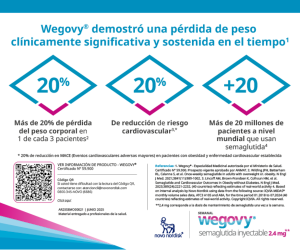Resistance training (strength) and type 1 diabetes mellitus
Keywords:
resistance, type 1 diabetes mellitusAbstract
The widespread presence of slow red and fast white fibers in all vertebrates demonstrates the evolutionary advantage of having two motor types for animal movement: a slow economical one for most activities, and an energetically costly one for fast movements and emergency actions and which require a lot of strength1. In a randomized crossover trial, 10 adults with type 1 diabetes mellitus (T1DM) aged 33 +/- 10 years and disease duration of 18 +/- 10 years were assigned to aerobic, resistance, and no exercise. The primary objective was the percentage of time in range in 24 h. The aerobic group decreased glucose 71+/-48 and the resistance group 24+/-32. The time in the 24-h range was significantly longer in the resistance group (70% vs. 60% and 56%). In conclusion, resistance training could improve glycemic control in this population2.The randomized clinical trial Resistance Exercise in Already Active Diabetic Individuals (READI) aimed to evaluate the effects of improving HbA1c, fitness, body composition and cardiovascular risk factors in aerobically active individuals with DM1. Among 131 individuals, they were assigned to resistance training (INT n=71) and control (CONn=60) after a run-in of 5 weeks for 22 weeks. Everyone maintained their aerobic training. There were no changes in HbA1c. Waist circumference decreased more in the INT group over 6 months. Muscle strength increased more in the INT group (p<.001). There were no changes in hypoglycemia and other variables. Adding resistance training did not affect blood glucose, but increased strength and decreased waist circumference in previously aerobically active individuals with T1D. Smaller waist circumference is strongly associated with lower cardiovascular risk and is independently associated with diastolic dysfunction in DM1.
References
I. Peichel CL, Bolnick D, et al. Speciation. Cold Spring Harb Perspect Biol 2024:a041735. doi: 10.1101/cshperspect.a041477.
II. Reddy R, et al. Effect of aerobic and resistance exercise on glycemic control in adults with type 1 diabetes. Can J Diabetes 2019;43/6):406-414. doi: 10.1016/j.jcjd.2018.08.193.
III. Sigal RJ, et al. The Resistance Exercise in Already Active Diabetic Individuals (READI) Randomized clinical trial. J Clin Endocrinol Metab 2023;108(5). doi: 10.1210/clinem/dgac682.
IV. de Lima VA, et al. Effects of resistance training on the glycemic control of people with type 1 diabetes: a systematic review and meta-analysis. Arch Endocrinol Metab. 2022;66/4 doi: 10.20945/2359-3997000000487.
Downloads
Published
Issue
Section
License
Copyright (c) 2024 on behalf of the authors. Reproduction rights: Argentine Society of Diabetes

This work is licensed under a Creative Commons Attribution-NonCommercial-NoDerivatives 4.0 International License.
Dirección Nacional de Derecho de Autor, Exp. N° 5.333.129. Instituto Nacional de la Propiedad Industrial, Marca «Revista de la Sociedad Argentina de Diabetes - Asociación Civil» N° de concesión 2.605.405 y N° de disposición 1.404/13.
La Revista de la SAD está licenciada bajo Licencia Creative Commons Atribución – No Comercial – Sin Obra Derivada 4.0 Internacional.
Por otra parte, la Revista SAD permite que los autores mantengan los derechos de autor sin restricciones.




























